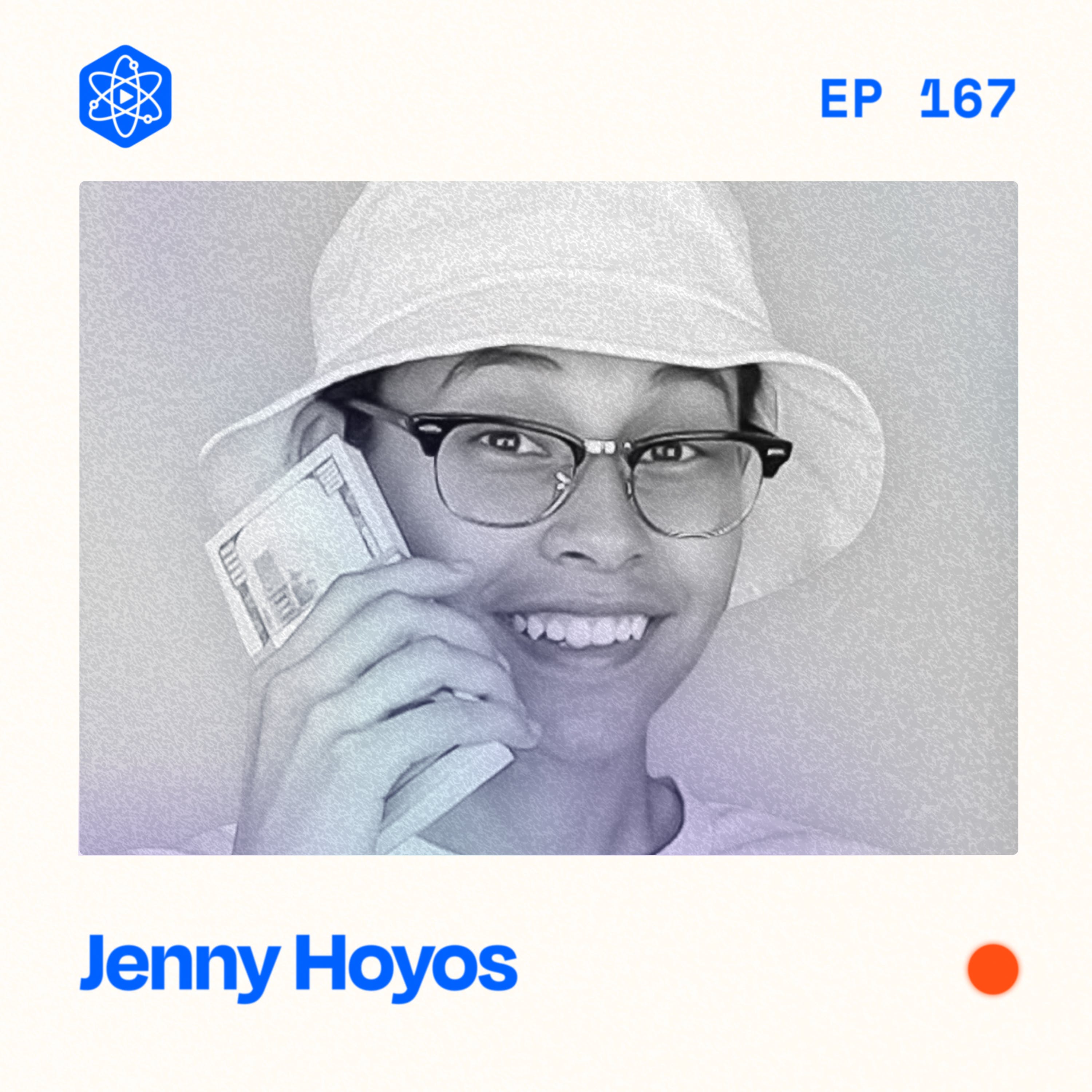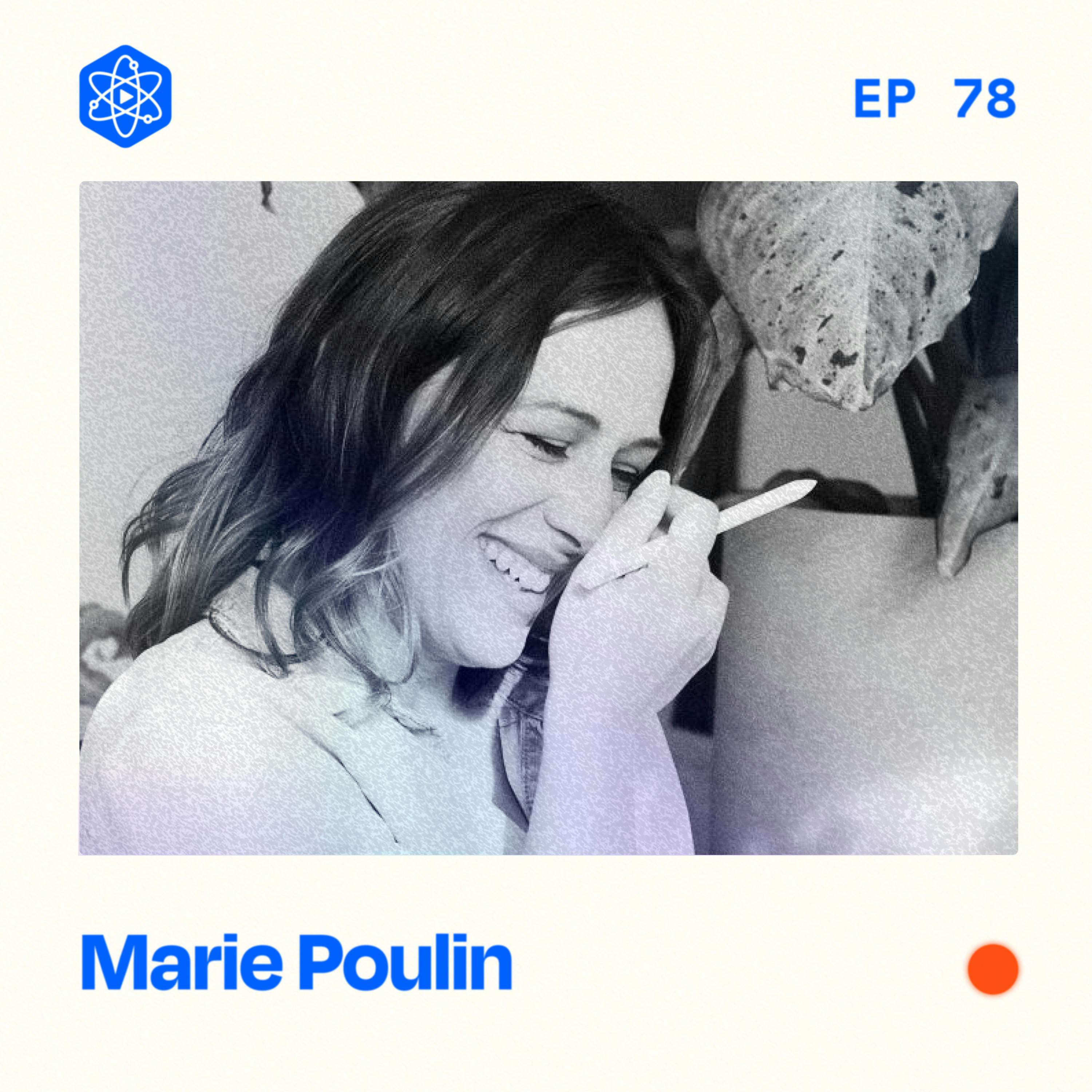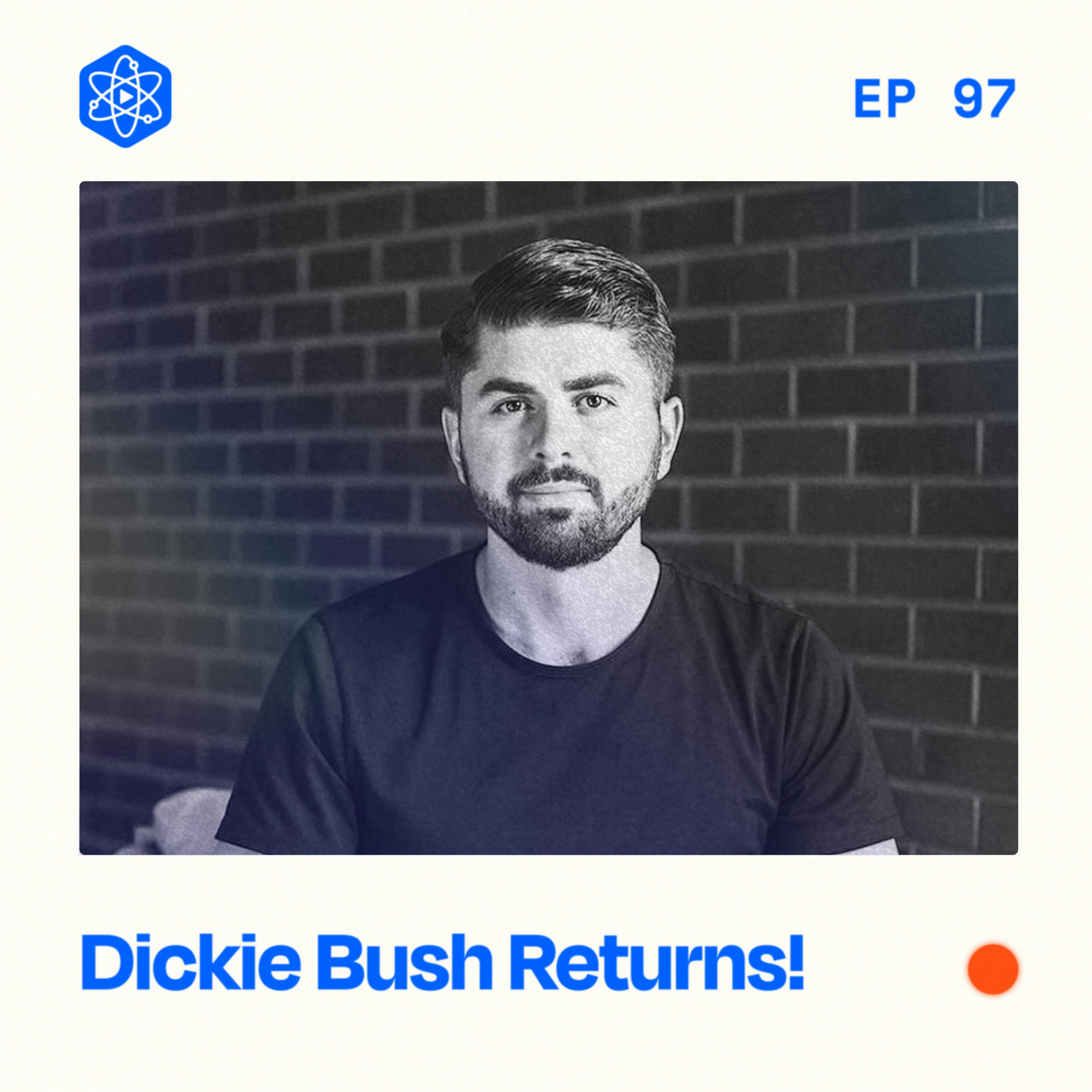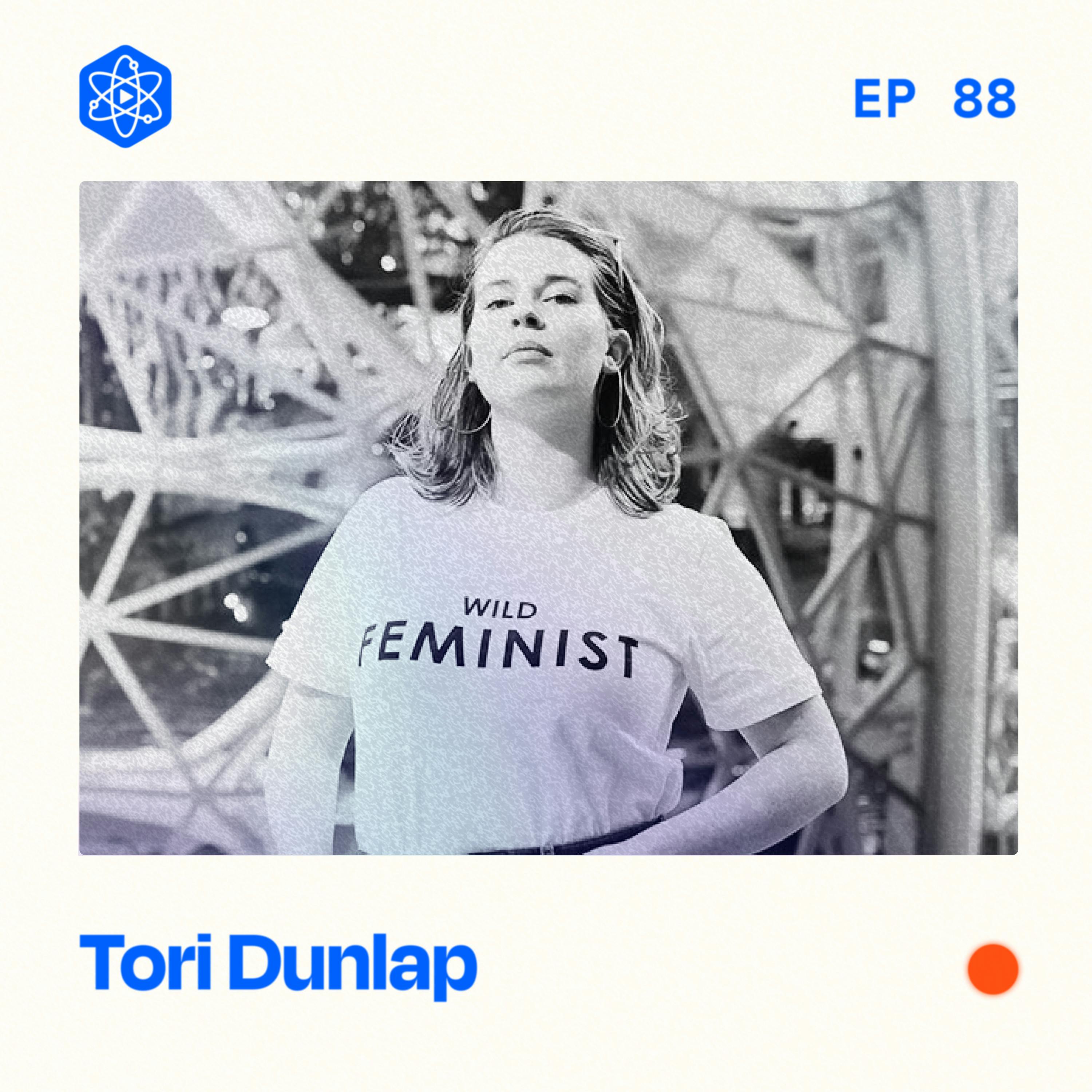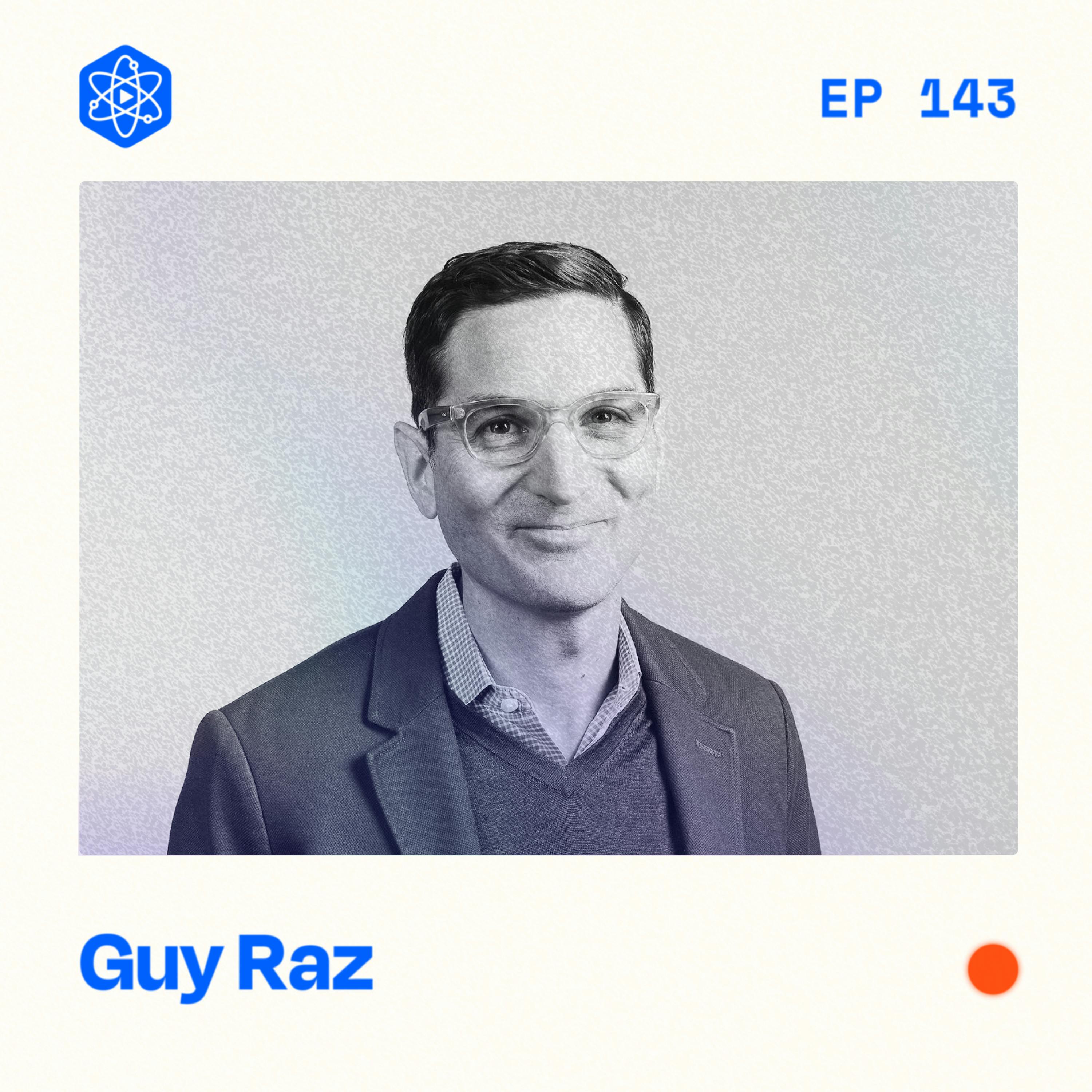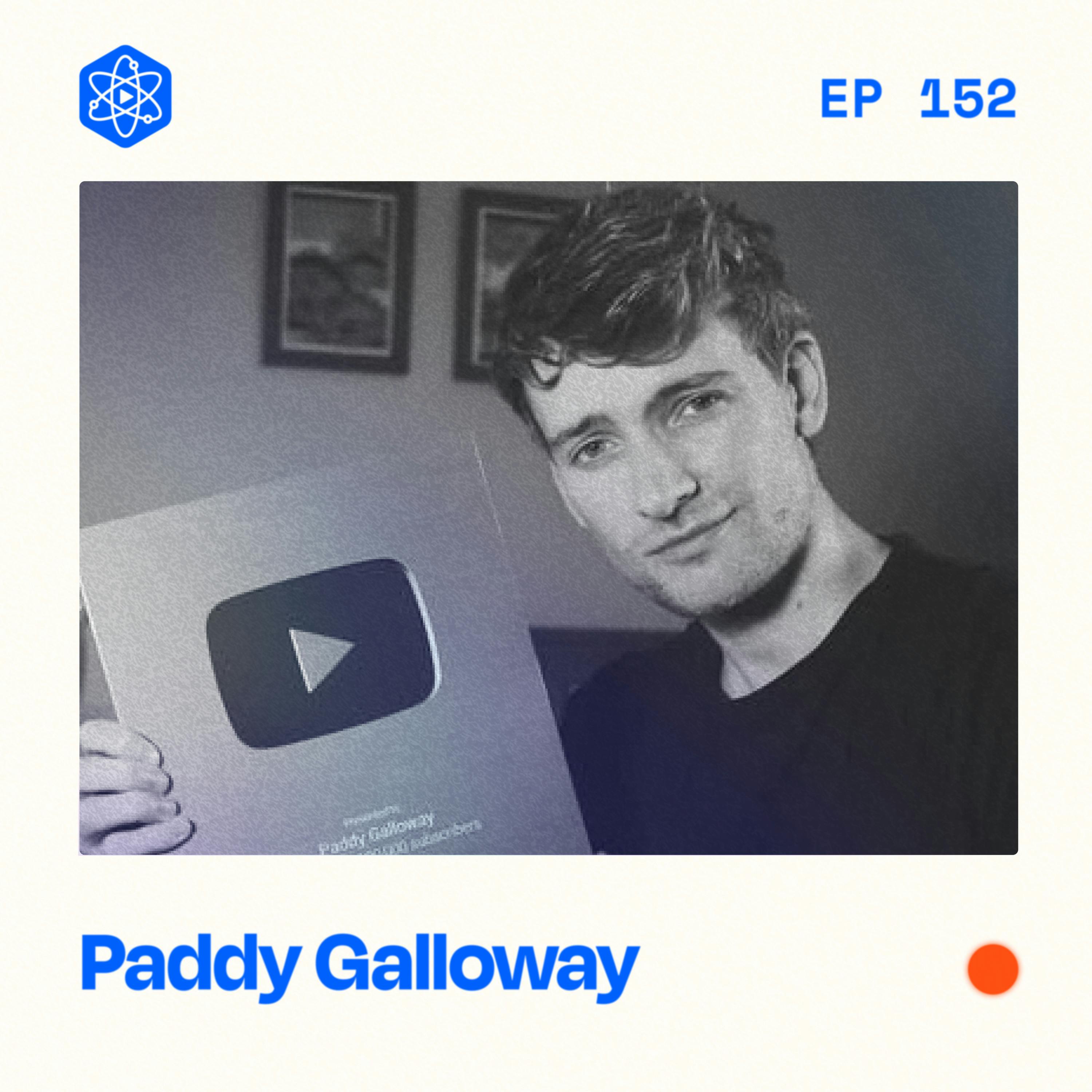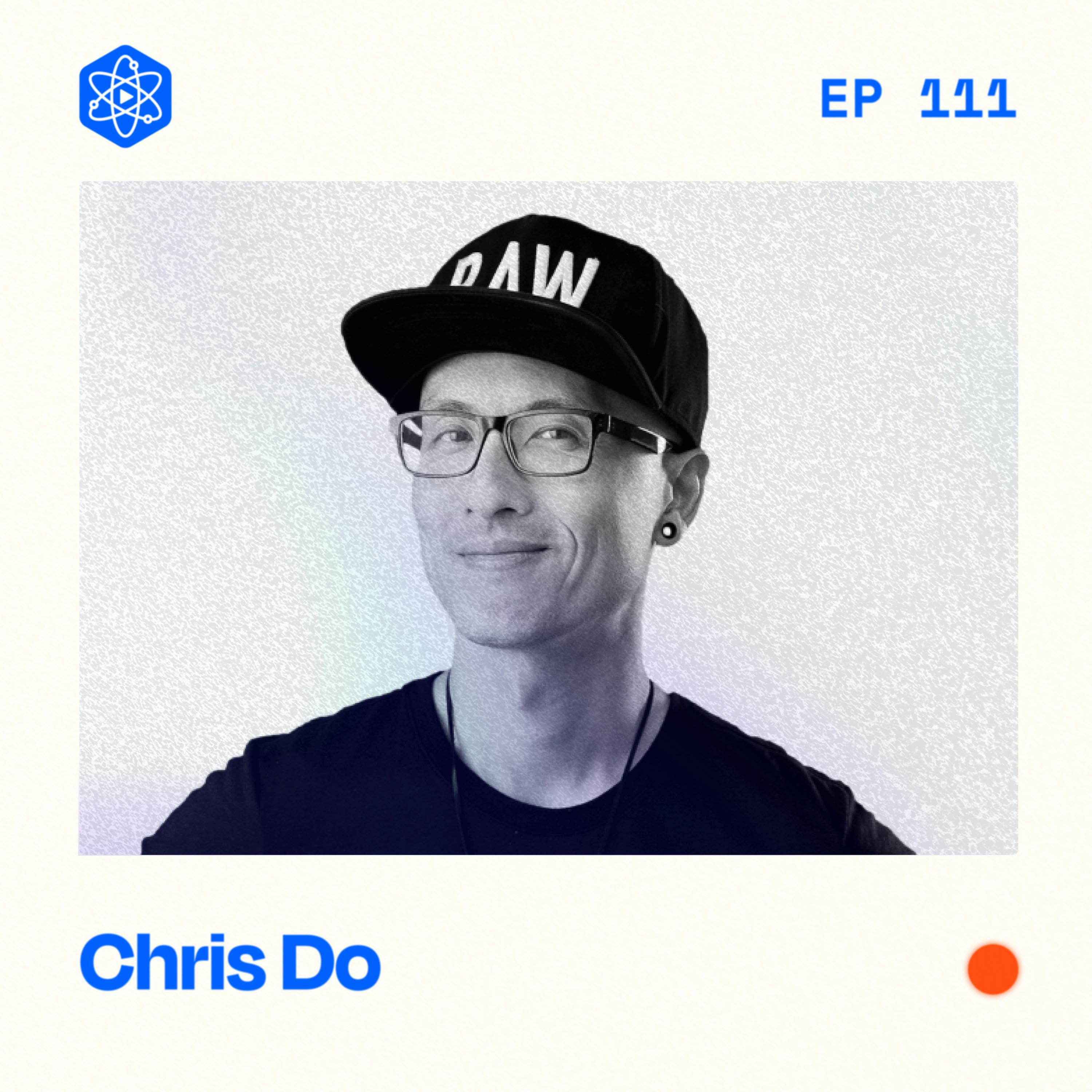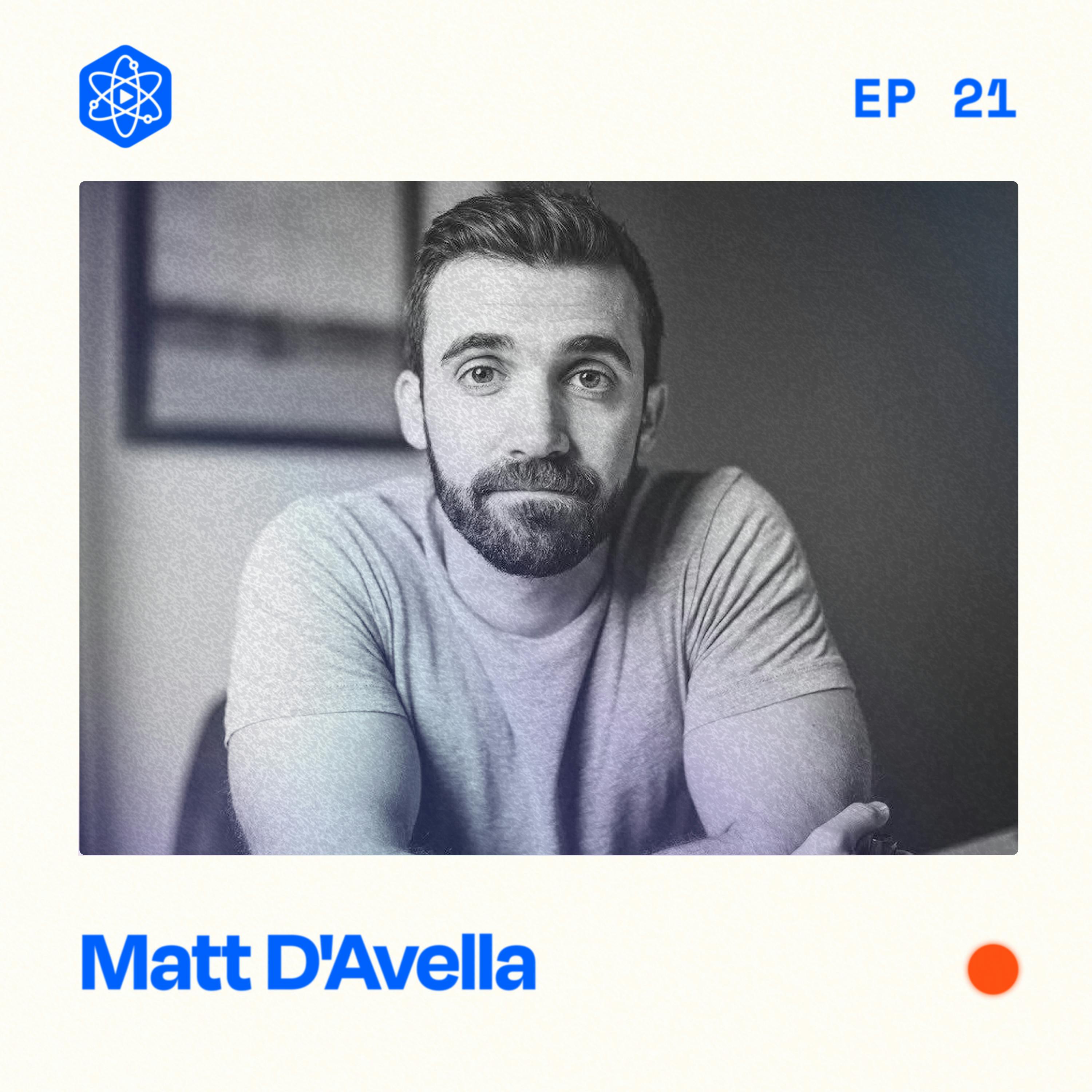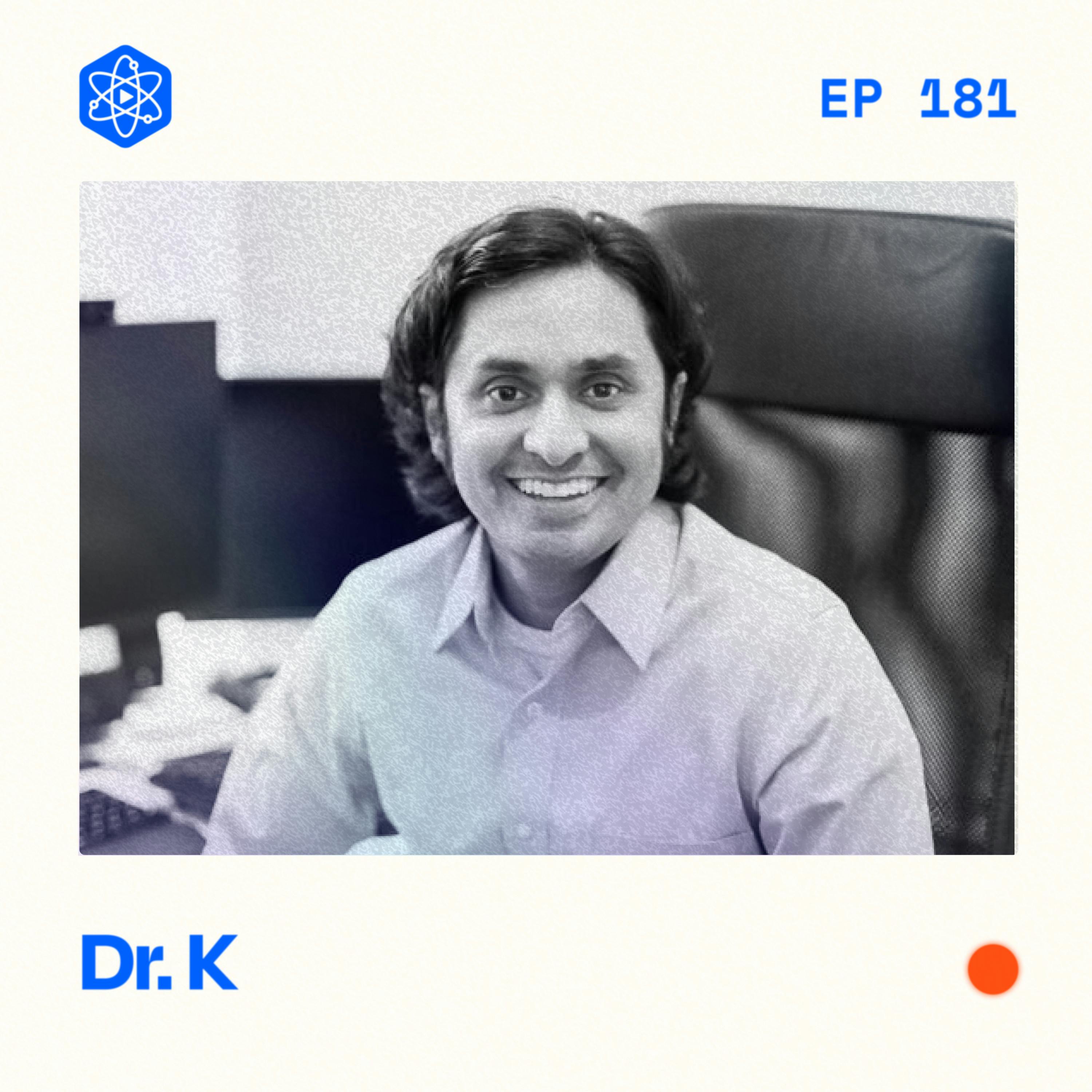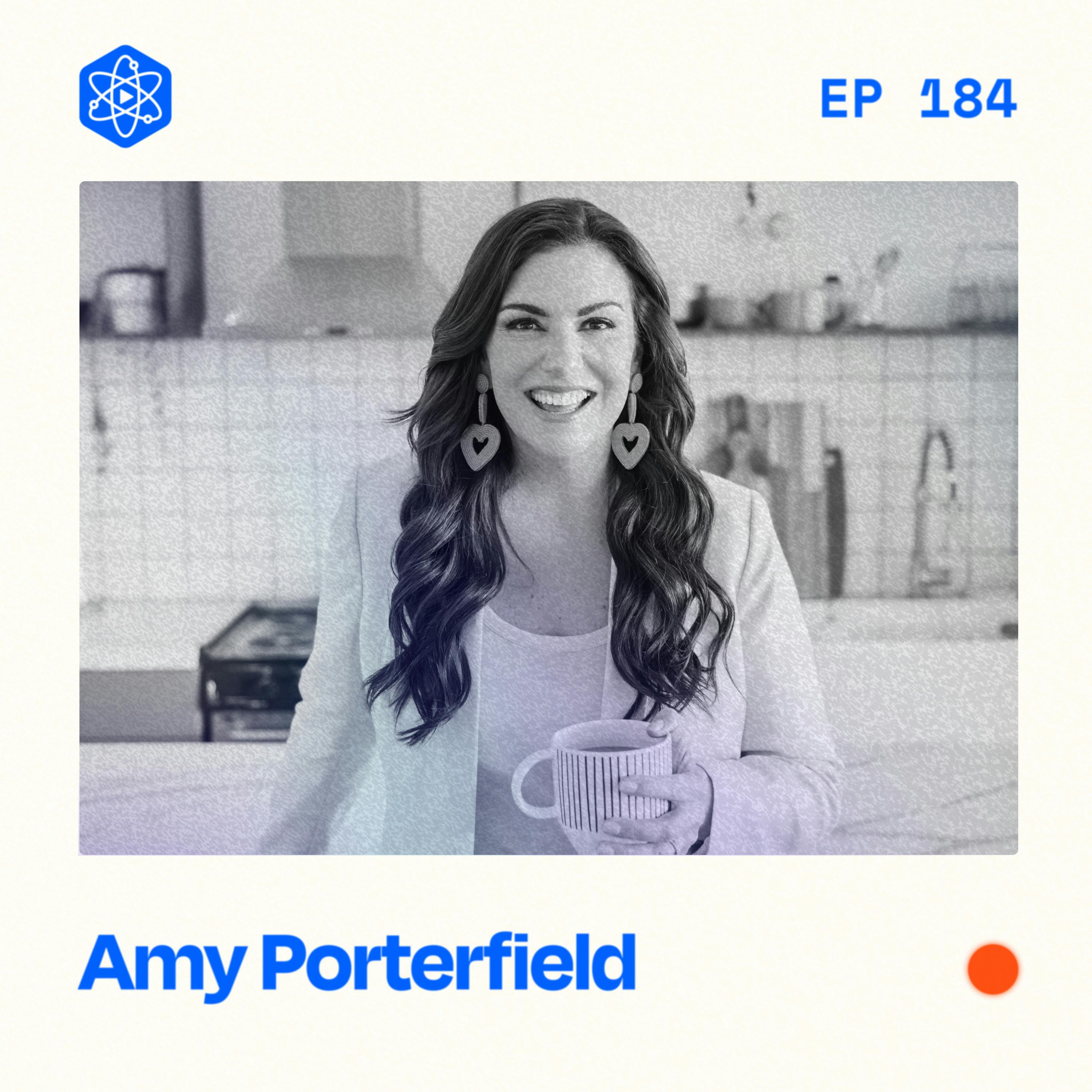A masterclass on short-form vertical video.
WATCH
▶️ Watch this episode on YouTube
***
EPISODE DESCRIPTION
Jenny Hoyos is an 18 year old YouTuber, who is absolutely crushing Shorts. She’s done over 600 million views in the past year alone, averaging 10 million views per video.
She has analyzed thousands of shorts, including MrBeast's and Ryan Trahan's. And she also looks at what is trending.
Jenny can figure out how to make it viral.
So in this episode, you'll learn
- How to make anything viral
- How to create the perfect Short
- The differences in Short form content platforms
- And a hot take you might not be expecting
Full transcript and show notes
Jenny's Website / YouTube / Instagram / TikTok
***
TIMESTAMPS
(00:00) The YouTuber Who Solved Shorts
(01:05) How to Make Anything Go Viral
(02:19) What Makes a Good Short?
(05:28) Importance of Retention and Rewatchability
(09:41) Crafting the Perfect 1st Frame Hook
(12:53) How to Generate Great Ideas
(16:24) Retention Mechanisms and Viewer Expectations
(18:34) Relationship Between Short Length and Retention
(19:50) Jenny’s Shorts Structure
(24:07) Jenny’s Video Making Process
(26:13) Finding Your Audience Avatar
(28:26) Differences Across Short Form Platforms
(31:13) Transitioning From Shorts to Long Form
(36:03) Jenny’s YouTube Hot Takes
***
RECOMMENDED NEXT EPISODE
***
WHEN YOU'RE READY
🚀 Get CreatorHQ (creator operating system)
🧪 Join The Lab (private membership community)
***
CONNECT
***
SPONSORS
💼 View all sponsors and offers
***
SAY THANKS
Jenny Hoyos [00:00:00]:
I don't ask if you'll go viral. I can figure out how to make it viral.
Jay Clouse [00:00:03]:
That is an absurd thing to say. That's Jenny Hoyos, an 18 year old YouTuber who is absolutely crushing
Jenny Hoyos [00:00:12]:
shorts.
Jay Clouse [00:00:13]:
She's done over 600,000,000 views In the past year alone, averaging 10,000,000 views per video, how does she do it?
Jenny Hoyos [00:00:22]:
I have analyzed Thousands of shorts. I've analyzed all of mister b's shorts, all of Ryan Trahan's shorts, and what I found was
Jay Clouse [00:00:31]:
In this episode, you'll learn to make anything go viral?
Jenny Hoyos [00:00:34]:
I think you can make a video about anything. It's just adding and it
Jay Clouse [00:00:40]:
How to create the perfect short?
Jenny Hoyos [00:00:42]:
Every 2nd counts on a short. Like, every single second. Whatever you say you're gonna do, you end it right after you do it.
Jay Clouse [00:00:48]:
The differences in short form content platforms
Jenny Hoyos [00:00:50]:
Short form content not the same across platforms. I noticed that YouTube likes
Jay Clouse [00:00:57]:
And a hot take you might not be expecting.
Jenny Hoyos [00:00:59]:
Retention doesn't matter as much as people think it does.
Jay Clouse [00:01:05]:
You said this kind of aside. You said, well, I can make anything go viral. Like, if the idea is good, I can make I can make it go viral, is an absurd thing to say, and I wanna hear what that means to you. How do you how do you make anything go viral?
Jenny Hoyos [00:01:18]:
It's just adding story and a twist, especially with shorts Since, like, no one's actually having to click on your video, I think you can make a video about anything. You can make video about paint drying, And you can make it entertaining if there's a story around it and if the viewer is invested.
Jay Clouse [00:01:34]:
What are your favorite ways to get people invested? How do you how do you make a story that people care
Jenny Hoyos [00:01:37]:
about? I think my content is very Personality based, I'd say. So for me, making it personal makes them invested. I'll give you an example. I actually did this in a long form. In the video, I cooked for strangers to make money. Okay. Very baseline. Why should they care? Well, my kitchen is broken, And I wanna raise money for it by cooking and making money.
Jenny Hoyos [00:02:01]:
You know? It's it's ironic. Like, I'm My kitchen's broken. So in order to fix it, I have to cook to make money. So I think that's what makes people invested having, like, Some sort of personal why or goal and irony too is pretty funny.
Jay Clouse [00:02:14]:
I like that. I like that. Irony juxtaposition. Jenny is the hero of the
Jenny Hoyos [00:02:18]:
story. Exactly.
Jay Clouse [00:02:20]:
What makes a good short?
Jenny Hoyos [00:02:22]:
When I think of good, it's very subjective. So there's no direct definition as what makes a good short because everyone has different taste, but I can say what makes a good short to me.
Jay Clouse [00:02:33]:
Okay. Let's hear that.
Jenny Hoyos [00:02:34]:
To me, a good short is one that has A strong hook. And the way I like to explain it is if it could be used as a title and thumbnail on a long form and, like, it will still get clicks, then it'll work for a short. You know? So the hook needs to be very visual. You need to understand it without even listening to it, and it needs to be so simple, Like, so simply said, like you said, explain to a 5 year old. So I think that's one of the key things. And then also just a story that just, You know, pushes you through, and not only do you watch to the end, but you rewatch it again. So that's what makes a good short to me.
Jay Clouse [00:03:08]:
Let's say that you are Planning or want to create a new video. How do you start thinking about hooks or how do you generate hooks?
Jenny Hoyos [00:03:16]:
It's it's very funny because I like to I like to see shorts, Like, as like even though I don't do that many long forms, I like to see shorts as if I'm making, like, a long form. So, like, I will sketch, like, almost as if it's tied on thumbnails. So, like, I have my iPad and I draw, like, what would I visually want it to look like? What are different ways if I was to put it together, what would that look like? So when I'm making a hook, I just, like, keep drawing and sketching or, like, even just imagining until something just clicks. So the first thing is the visual. Easily. The first thing is the visual, and then I figure out how I'm gonna accompany that visual. And what I'm saying, I try to make it as concise as possible, and I'll put it in a readability checker And then make sure that it's actually, like, understandable to at least, like, 5th grade or under.
Jay Clouse [00:04:01]:
What's what's the readability checker that you use?
Jenny Hoyos [00:04:04]:
I don't I don't know. I don't pay for it. It's readability formulas .com is the one I use.
Jay Clouse [00:04:09]:
And you wanna be 5th grader
Jenny Hoyos [00:04:10]:
under? 5th grader under.
Jay Clouse [00:04:11]:
Yeah. Have you have you played around with things that are, older, quote, unquote, than that and seen that that's the level that it should be at? Or how did you arrive at 5th grade?
Jenny Hoyos [00:04:20]:
Yeah. So I have analyzed thousands of shorts as you may know. So I've, like, scraped, you know, the scripts of a bunch of shorts, And I've put it in this readability checker, and I've noticed that the most popular shorts, especially mister Beast. You know, mister Beast is one of the best shorts creators, and his is, like, in 1st grade level. So So I just basically like, after scraping everything, that's when I realized, like, 5th grade and under is, like, about the range you wanna be at. Yeah. I think yeah. This is simply put.
Jay Clouse [00:04:48]:
Yeah. How did you land on 5th grade? Was that the average of all of these?
Jenny Hoyos [00:04:52]:
I'm not gonna lie. The readability can sometimes be off, but it was It was just, like, at a range because I I believe, like like, Iraq, for example, is, like, slightly higher. I don't know the exact number on the top of my head, But I I just noticed that, like, a good in between is 5th grade. But I will say the problem with the readability is especially, like, with content like mine, You can change the readability from 5th grade to, like, 8th grade by simply using the word business. Mhmm. Do I try to avoid things like that or if you use the word finance? Or if you use, like, for example, profit, instead of saying profit, I just explain the definition of profit every time I talk about it.
Jay Clouse [00:05:29]:
I did not know this about you. I did not know that you analyze thousands of shorts by scraping the titles and the transcripts. Can you tell me more about that?
Jenny Hoyos [00:05:38]:
Yeah. So it's so funny because, like, basically, the way I do it is, you know, when you go on to YouTube and you open up a short, it sends you, like even on desktop, it sends you to, like, this shorts Page or whatever. Yeah. But if you change the URL to, like, watch question mark v equals then the URL, Then it will send you to, like, the actual YouTube page, and then you can just click transcript, copy and paste that transcript, and then I just check the readability, but I also, like, check other things. You know, I just analyze why these shorts are
Jay Clouse [00:06:08]:
working. So interesting. So interesting. I would I would love to hear anything else that comes to mind as you were looking at all this that started to help you pull together your own short strategy because I did not realize that you've done all this research and pulled all this together. It gets me very, very excited. As the creator science guy, I am super Yeah. Excited about this this research.
Jenny Hoyos [00:06:29]:
Yeah. So I've also, like, deeply analyzed all of my videos, and I think that's where you learn the most. Everyone has different audiences, So what works for mister beast might not work for me. Right? So what I did was, like, I did my own little experiment. Like, when I knew I wanted to get into shorts, I told myself I was gonna upload every day for as long as possible, and I think I only got, like, a week or 2 in. It it didn't it didn't I didn't I didn't get that far, but The goal was essentially to upload as much as possible. Quantity is what makes quality. When I was doing that quantity, I would analyze my retention graph, this is just, like, one example I'll just pull out for you.
Jenny Hoyos [00:07:07]:
So there was 1 video after 5 days I got I think it was, like, 50,000 views in 5 days. Right? Which I mean, on average, I usually get, like, a1000000. So I was not happy with the performance. And I pulled up the retention graph, And I noticed on the last 2nd, it was a huge dip. It was 70%. One second later, it was 45%. Like, a 25% drop in one second, And the retention was 83%. So what I did was I went to YouTube studio.
Jenny Hoyos [00:07:36]:
I trimmed off that one second. YouTube removed this feature, by the way. YouTube, please bring it back. But just by removing that one second at the end, it went from 83% to 88%, and the video went flying. And that that's why, like, every 2nd counts on a short, like, every single second. Because when you think about it, let's say you have a 32nd short. Right? If you lose one second, that's already 97%. That's 3 percentages.
Jenny Hoyos [00:08:02]:
You know, if you have lose 2 seconds, that's 6%. So When you think about it, I'm sure it's like you're not just losing one second. You're losing double or even triple because that one second accumulates to 2 or 3% of the video.
Jay Clouse [00:08:15]:
The takeaway here I believe is that you really want in a short high retention course with a high retention and everything But I've heard some people talk about you really want people to sometimes loop and watch even into a repeat Yes. Of the thing. Is that true?
Jenny Hoyos [00:08:31]:
Yes. Yes. And I'll explain why. The average scroll through rate, which is basically, like, on YouTube shorts, you can see What percentage who like, what percentage of people viewed versus swiped away? And I like to call it scroll through rate, but the average scroll through rate is, like, 70%. You wanna get that as high as possible. My personal scroll through rate is, like, 85%. So my average scroll through rate is 85%, but my average retention is 95%. If only 85% of people are watching it, how does the retention suddenly get to 95%.
Jenny Hoyos [00:09:07]:
It's because they're rewatching it. So to have that, like, 90 plus percent retention, which is, like, In my opinion, the bare minimum, like, for a short, blow up, you need them to watch it again.
Jay Clouse [00:09:18]:
So 90% is your benchmark. That's what you're looking for for retention for something that will have The the virality and reach that you're accustomed to at this point.
Jenny Hoyos [00:09:27]:
For the most part, yes. I will say it depends on the amount of impressions Because my videos average, like, 95% retention, but we're talking, like, that's on 10,000,000 views. So that's like, It's very difficult to do. Right. So
Jay Clouse [00:09:41]:
yeah. Okay. So you mentioned that with the hooks, you think about the visual nature of it. Are you talking about the 1st frame of the actual
Jenny Hoyos [00:09:49]:
video? Yes. I'm talking about the 1st frame. I don't know how many shorts you've seen, so I'll try and it.
Jay Clouse [00:09:54]:
But I I've seen more than 1, but less than you. So let's let's assume on the low end.
Jenny Hoyos [00:10:00]:
Yeah. So I have this series where I remake fast food items for a dollar. Instead of, like, showing my face, I show The location. I show the front of the location because, obviously, like, more people know the fast food location than they know me. The easiest way to describe, Like, the video just visually is by showing the fast food item in front of the location. So usually, it's so funny. I would have the logo in the middle, And then I'll put the food item here. And then right in the middle, I'll put, like, $1 burrito, $1 sandwich, $1 burger.
Jenny Hoyos [00:10:36]:
Then it's like you perfectly see it. It's always perfectly aligned, and it really helps for bingeability too because it's actually a playlist, and I get a lot of views from people, like, Just, like, watching it down, and they they just know it's me every time they see that
Jay Clouse [00:10:48]:
framing. So interesting. Was this all trial and error, Or did you model this this style of of framing and hook off of anyone in particular?
Jenny Hoyos [00:10:59]:
It's definitely, like, Trial and error. At first, I started by, I guess, you can say stealing. Like, stealing like an artist because that's how to me, I I believe that's how you learn. Sure. You obviously wanna find your own style, but I started by, like, copying other people's hooks. And then I was looking at, like, which percentage is the highest. So I it sounds so funny. So, like, a strategy, a technique is like, what would it sound like if this YouTuber made this video? And then I would make a bunch of hooks depending on that.
Jenny Hoyos [00:11:30]:
So I'll have, like, a list of, like, the big ten, and then I'll just, like, you know, have a bunch of different hooks, Pick which one's my favorite, see the percentage, and then assess what's the best hook. Then I made my own twist into it.
Jay Clouse [00:11:42]:
After a quick break, Jenny walks me through her process for coming up with great ideas. So stick around. We'll be right back. And now back to my conversation with Jenny Hoyos. What would you say is your proportion of, like, video ideas to videos you actually create?
Jenny Hoyos [00:12:02]:
Oh gosh. Well, I have, like right now in a Google Doc, I have a list of a 1000 ideas. Crazy. And I'm only doing
Jay Clouse [00:12:09]:
10.
Jenny Hoyos [00:12:10]:
Crazy. So
Jay Clouse [00:12:10]:
So these are
Jenny Hoyos [00:12:11]:
It depends.
Jay Clouse [00:12:11]:
These are a 1,000 ideas. Not a 1,000 hooks, a 1,000 different video ideas that could each have Multiple different hooks within them.
Jenny Hoyos [00:12:19]:
Yes. It's it's it's crazy.
Jay Clouse [00:12:21]:
Yeah. Where do they come from? How do you generate that many ideas?
Jenny Hoyos [00:12:24]:
Okay. There's a lot of ways. So one way is I just watch YouTube and then see what I personally, you know, like, wanna recreate and, like, twist. Or it's like, what video do I wanna watch? Or, as funny as it sounds, I also use AI. AI has some pretty good ideas, But the best ideas, at least for me personally, they come from just living it and then thinking this is a video idea. So let me explain that. So one of my most popular videos is me making a garden. As funny as it sounds, because that sounds like it would get no views, yet it has, like, I guess, like, 30,000,000 views.
Jenny Hoyos [00:13:04]:
Like so
Jay Clouse [00:13:05]:
That's a ton.
Jenny Hoyos [00:13:06]:
There's so many ideas where something like this happened. One day, I was eating ratatouille because it's, like, one of my favorite Foods. Right? And I'm like, I can't believe, like, it costs $20 to cook. And I'm like, but can't I just make a garden and then have unlimited ratatouille for, like, $5, and I'm like, oh my gosh. That's a video idea. So I'm like, now I gotta make a garden, and then I'm gonna grow vegetables To have infinite ratatouille because it's my favorite food. So, like, that's where the story came from. Or, like, another time, My grandma, he was so funny.
Jenny Hoyos [00:13:39]:
She got, like, like I think it was, like, laundry detergent in the mail or whatever. Like, free laundry detergent. I'm like, How'd you get free laundry detergent? That's, like, $30. And she was like, oh, I called the company and I complained to them. I told them that they suck, And they sent me free laundry detergent. I'm like, that's a video. I gotta do that. So it's like, you know, just things that I live, and then I'm like, that needs be a video.
Jenny Hoyos [00:14:03]:
Those are my best ideas.
Jay Clouse [00:14:04]:
So how do you go from a 1,000 ideas to narrow it down to 10? What is the deciding factor of which videos make the cut?
Jenny Hoyos [00:14:13]:
Yeah. So I would say I narrow it I narrow it down to, like like, let's say we have a 100 because a 100 is like an easier number to work with. So let's say we have a 100 ideas. I'll narrow it down to, like, 25, 25 to 50. That's usually just based on, like, first thing I ask myself is do I wanna make it? I don't ask if it'll go viral. I can figure out how to make it viral if I really wanna make it. So first, I tell myself, do I actually wanna make this? Is this actually logistically possible? And then it's like, is the hook good? Is the mechanism good? Are people gonna rewatch this? Then that's when I look at, like, where's the virality aspect in this? Then I'll bring it down to 25. Then from there, I'll send it to, my video editor who's also like he's just like he's really involved in the channel, so he's not just a video editor.
Jenny Hoyos [00:14:59]:
He's also like a strategist because, you know, he's He he knows a lot about YouTube, and, I'll send it to him, and he'll bring my 25 to, like, 10. And he'll basically he'll go in And tell me, like, even further if it actually seems viral, if he thinks it's shareable. But for him, like, he's really good At telling if if a concept is simple yet complex, if that makes
Jay Clouse [00:15:23]:
sense. Mhmm. Mhmm. You mentioned in a word a second ago, you said, is the mechanism good? Do you mean by
Jenny Hoyos [00:15:29]:
mechanism? If they're going to be pushed to the end. So, like, a good example is mister Beast, the red circle, like, is it, like, last to leave circle wins $100,000. The mechanism is the circle is constantly closing. So the viewers are watching till the end. So if if it was just like, the circle wasn't closing, I don't know if anyone watched till the end. They'll just skip to the end probably.
Jay Clouse [00:15:49]:
Interesting. What are some of the mechanisms that you've used?
Jenny Hoyos [00:15:51]:
I think this is the easiest one that anyone can apply. It's basically saying There's 3 steps or there's 3 things we need to do because it's very easy to follow, and you just show the list of 3. So now the viewer knows that, oh, we're getting closer to the video. Like, they actually have a good which is probably one of the biggest things. I think that's I think that's why my videos, like, go viral. It's because People have a good expectation of what they're gonna watch and what's actually gonna be at the end.
Jay Clouse [00:16:18]:
So when it comes to expectations, if you set expectations, do you find that Then the the next step is completely following through on those expectations, or do you ever try to, like, subvert expectations for an element of surprise or something?
Jenny Hoyos [00:16:32]:
I try to follow those expectations, but then have a twist. For example, I gave my mom a $5 mother's day gift. The hook was, my mom's never had a Mother's Day gift, so I'm gonna change that and buy her the best present with $5.
Jay Clouse [00:16:46]:
It was
Jenny Hoyos [00:16:47]:
it was But why making them carry on the hook? My mom's never had a mother's day gift, so I'm gonna change that. Then the expectation is so I'm gonna surprise her with a gift For $5. And on screen, I'm showing me giving her the gift, but you're gonna see that till the end. So it's like it's the the cold open, And then we cut to the video. So the expectation is by the end of the video, you're gonna see me give her a gift. So then I follow through, make the gift, And then I surprise her. Now I gave them the expectation. I closed the loop that I'm gonna surprise her with this gift.
Jenny Hoyos [00:17:19]:
But the twist was She ended up dropping the gift. It broke, and then she's like, you're the best daughter I've ever had. I'm like, I'm the only one video. So it's like yeah. I I gave the expectation that I'm gonna gift her, and then we just twisted it at the
Jay Clouse [00:17:34]:
end. How long would you say on average your shorts are?
Jenny Hoyos [00:17:38]:
Oh, I know exactly the answer because I've done the analysis. Okay. What's the answer? It's it's exactly 34 seconds because my most popular videos are exactly that length, So I try to make it exactly that way.
Jay Clouse [00:17:49]:
That was gonna be my next question was to say, do you is that now your your benchmark for what you're looking for in a video, 34 seconds?
Jenny Hoyos [00:17:56]:
Yes. So Yes. Everyone's is different. Everyone gotta analyze it, make for their their own
Jay Clouse [00:18:01]:
channel. And I think I've seen well, I was in, I was in Patty Galloway's accelerator, and he showed some research that he had done And to show, like, depending on your short length, this is the bar for retention you should be shooting for. So I'm guessing that 90% retention is also related to the average total length of your videos, Whereas if it's shorter, maybe you need retention to be higher to achieve the same virality.
Jenny Hoyos [00:18:26]:
Exactly. Yes. Correct. So For me, for my personal channel, like I said, like, there's no specific number. I think everyone just has to check out their analytics. But for me, I noticed if a short is less than 30 seconds, it needs to. It has to have over a 100% retention or else it's not gonna take off. Wow.
Jenny Hoyos [00:18:43]:
So that's why I like to make it slightly longer, but too long is too long for my audience since I do have a very young audience.
Jay Clouse [00:18:51]:
If you know that you want your videos to be about 34 seconds I'm thinking if it's 34 seconds and you know that you want your last second retention to be really high, it seems like the payoff is, like, Literally the last seconds. Now we got 34:33 seconds to work with. You probably know how long your hook generally is. So maybe that's you know 3 seconds or 5 seconds and you have this Reminder of 28 to 30 seconds in the middle, do you break that down into specific pieces of the mechanism, or is that just kind of Whatever happens in the edit.
Jenny Hoyos [00:19:20]:
Yeah. So it's usually whatever happens in the edit, but what I do check is Before I film the video, I will do a rough script even if it's not even what happens in the video. Like, I'll just roughly, you know, do it, and I can just change it later. And from there, I'll have a sense of how long it is just from the word count, but I don't necessarily force it. I just let it free flow like you said in the edit, But I do have a rough idea of the word count and my hooks and foreshadow. I always do that in every video. I do a hook, And then I foreshadow, which is 2 lines, and that is usually 3 seconds or less.
Jay Clouse [00:19:56]:
And foreshadow, you're saying that's in That's in the voice over. Because I know you mentioned, like, the the example of your your mom's gift when you see her grab the package. That's foreshadowing in a way, but that's completely visual. You're saying you dedicate some spoken time to foreshadowing as well.
Jenny Hoyos [00:20:14]:
Yes. I always have spoken time to foreshadowing it. Like, it doesn't matter what video idea it is. Like like like, let me just pull up, like, a a random idea. Like, I'm going to the beach. Right? And then it's like, why would someone watch? So that's the hook. I'm going to the beach, and what's the foreshadow? I'm going to the beach, and I'm gonna surprise someone with $100 at the end of the video. It could literally be with anything.
Jenny Hoyos [00:20:36]:
It just needs to have some sort of expectation.
Jay Clouse [00:20:38]:
I I want to keep going down this the structure rabbit hole a little bit more because I keep finding new layers like I didn't know foreshadowing is part of your structure So is there anything that comes after the hook and foreshadowing that is a structural part of every
Jenny Hoyos [00:20:52]:
video? Yes. There actually is. So it will usually be hook, which is really short, then I'll foreshadow what's gonna be at the end, then I have to smoothly transition. So I used to have, like, a lot of breaks because you wanna give people time to breathe. Right? Because you don't wanna be like, I'm gonna be doing this and this and this and this. The video's over. I didn't like, they they're not gonna understand anything. So you want a pacing break Without the pacing actually breaking.
Jenny Hoyos [00:21:20]:
Let me explain what I mean by that. This I did this in my recent video. So it was like, McDonald's banned this item. Hook. So I'm gonna make it at home then convince them to put it back on the menu. That's the foreshadow. And then at first, I wrote, let's get started, But that breaks pace. So instead of saying, let's get started, I said, so I cooked illegally, and that that just flows better.
Jenny Hoyos [00:21:45]:
So I I don't wanna give, like because I already gave, like, 2 crucial pieces of detail. So if they give any more detail, they're just gonna forget about that, like, primacy recency. If you I can get into that. So it's like they're gonna forget what I just said. So we need a pacing break without the pacing actually breaking, if that makes
Jay Clouse [00:22:01]:
sense. Yeah. Totally. Okay. Let's keep going down this this trail. Is there is there more structural pieces past the
Jenny Hoyos [00:22:07]:
transition? Usually, it's just like problem solution or But therefore storytelling.
Jay Clouse [00:22:13]:
Okay. Tell me more about but therefore storytelling.
Jenny Hoyos [00:22:17]:
Basically, but therefore but therefore storytelling simply put is Just lots of change in the story. So story stories can't be stories without change. For example, I went on a walk, Then it started raining, then I went back home. It was much more boring than if it was, like, I went on a walk, but it started raining. Therefore, I started running back home, and I I I it was raining all over me, But good thing I had a handy umbrella while I was on my way back. Therefore, I got home. Like, it's the exact same story, But it just sounds so much more intriguing when you have, like, but
Jay Clouse [00:22:55]:
Yeah. And then
Jenny Hoyos [00:22:56]:
said or but therefore.
Jay Clouse [00:22:57]:
I'm so glad that you're able to, like, whip up these examples on the fly. This is must be very Stressful, the the spots I'm putting you on, but you're just like, I got it. Yeah. When we come back, we walk through Jenny's creative process from idea to hitting publish. So don't go anywhere. We'll be right back. And now please enjoy the rest of my conversation with Jenny Hoyos. So if I'm thinking from an order of operation standpoint, I'm I'm making some assumptions I'm realizing, and I wanna make sure I'm correct in them.
Jay Clouse [00:23:28]:
It sounds like you have ideas first, Then you narrow that down to a small number of ideas and ultimately a video that you say, Yes, this idea, my editor and I have decided is a good one. You come up with versions of the hook, and then it seems like you you start recording. And after recording, you start Editing and then after editing comes the transcript for the voice
Jenny Hoyos [00:23:52]:
over.
Jay Clouse [00:23:53]:
Did I get that right?
Jenny Hoyos [00:23:54]:
You were close. You're close. Like you said, ideas, then I find that 1 idea. Then I'll write my hook. Then I'll write the last line. So I always know the last line when I'm gonna film. Then I'll go back, and then after the hook, I figure out how I'm gonna foreshadow that. I I will always have the hook for so I always have 2 lines.
Jenny Hoyos [00:24:16]:
So it'd be like hook, foreshadow, end, but in between, It would be like it depends on the video. Sometimes it will be a rough script like we were saying so I can have that structure in mind, Or it would just be bullet points of things I wanna touch on while I'm filming. Then I will film. Once I filmed, I will revisit the script again, revise it, finalize it, then it goes in edit.
Jay Clouse [00:24:44]:
How do you write the last line without knowing what comes out in the filming?
Jenny Hoyos [00:24:48]:
It's you'd, like, leave it in blank. So it would be like For example, if I'm surprising someone with a gift, the last line would be then like, it's so simple. Then I surprised my mom and And then blank.
Jay Clouse [00:25:02]:
So it's usually It cuts your reaction.
Jenny Hoyos [00:25:04]:
Just to have a general
Jay Clouse [00:25:05]:
idea.
Jenny Hoyos [00:25:05]:
Yes. Yeah.
Jay Clouse [00:25:06]:
Exactly. Yes. Okay. I was watching your videos this morning, and I I was, like, really I took note of the fact that they all end very abruptly but, like, not in a way where I'm like, what happened? It's It's like it's pleasing, but it is abrupt. And we already talked about how you you kind of learn this. You turned it off. But it is like and I surprised my mom and, you know, and then and then her reaction and then and you mentioned a moment ago that the age of your audience is typically a little bit younger How much do you think about who the audience is when you think of ideas you know because in my world to to step back a second in my world a lot of times folks have like a very specific avatar that they're creating for who's trying to achieve some sort of specific goal I don't think that's the same in more of the entertainment space. So I'd love to hear to what level of detail you Think about an audience member in your
Jenny Hoyos [00:25:57]:
mind. Yeah. That's everything. Avatar is everything. So for me, I will think of, like, specific people. So I will think of, like, me when I was younger. I'll think about, like these these are my favorites to think about, by the way. My my nieces Or 10 years old.
Jenny Hoyos [00:26:14]:
10 I have 2 nieces that are 7 and 10, and they just moved to America last year, so they barely understand English. And that's that's who I wanna speak to. It's it's very tough because they might not be interested in the topic, but if I can make them interested And especially if it makes sense to them as non English speakers, then it's probably really good. So that's the way I see it. It's not necessarily thinking of, like, Their their dreams, their desires, but more so how can you speak to them? So I just it just I don't know if that makes sense because it's, like, it's it's different.
Jay Clouse [00:26:48]:
It it makes sense. It's interesting for me to hear because I just don't speak to folks on the more entertainment side of the creator world as often. So, actually, it's I'm just Coming at it from natural curiosity to hear how you do think about it. I would imagine the level of views you're getting tens of millions on these on these videos. It's a broad spectrum of people who are looking at this. So who do you who do you choose as the core of, yes, people outside of This type of person, maybe it's my nieces, will watch this, but I'm making it for this person in particular. I didn't know if you had that specificity or not.
Jenny Hoyos [00:27:23]:
Like I said, I do and I don't. So it's in the sense of, like, I it's mainly, like, my younger self, Which is, like, kind of weird because I can't actually my younger self can't actually watch it, but that's, like, the way I think of it, if that makes sense.
Jay Clouse [00:27:38]:
Yeah. For sure. For sure. Can we talk a little bit about Instagram reels and TikTok and how you think about those? Because a lot of times people think short form vertical video is same everywhere. Choose wherever you're leading and then just post it to all 3. And it's clear that your your YouTube is is much bigger than the other 2 platforms.
Jenny Hoyos [00:27:57]:
Mhmm.
Jay Clouse [00:27:57]:
And those other 2 platforms are much bigger than mine, so that's not a judgment on you. But I'm curious what you're hearing or what you're experiencing in terms of how this does or does not translate.
Jenny Hoyos [00:28:07]:
Yeah. So short form content is not the same across platforms, and I know this because I used to do very well on TikTok before I was doing well on YouTube. In fact, when I had, like, a 1000 subscribers on YouTube, I had, like, 70 k on TikTok. So I was doing much better, and I was averaging, like, A 1000000 views per TikTok. What was crazy is I remember in this in this point, I was posting to all 3 platforms, but TikTok was getting all the views. YouTube shorts and Instagram reels, we're getting, like, none of
Jay Clouse [00:28:35]:
it. Were you thinking about one of those platforms as, like, your lead platform at that
Jenny Hoyos [00:28:40]:
time? Was only TikTok.
Jay Clouse [00:28:41]:
So you're thinking I'm making this video for TikTok. I'm also posting to reels, and I'm also pointing to posting to shorts.
Jenny Hoyos [00:28:47]:
Correct. But It wasn't edited on the TikTok app. Like, it would still be filmed, you know, like, professionally and then edited it and then posting on TikTok. The same video that would get 1,000,000 views on TikTok would get a 1,000 views on YouTube shorts. And I was like, okay. Let me switch a strategy because I bought banned on TikTok, like, For a short period of time, I'm like, let me focus on YouTube. And then the opposite happened. I started averaging 1,000,000 views on YouTube and then a 1,000 on TikTok.
Jenny Hoyos [00:29:13]:
Like, this is really strange. Like, these platforms definitely won different content. And what I found, YouTube likes Definitely a slower, more mature you know, it's a more mature audience, so they want, like, a slower pace, more story. So those would be, like, the 34 second tick 34 second shorts that I'm making right now. TikTok, on the other hand, did not like Did not like videos over 30 seconds. It liked 10 to 20 second videos that were just, like, dense with information. Not that many jokes, just like, You know, just just scrollable. They're just trying to scroll as much as possible.
Jenny Hoyos [00:29:50]:
Versus Instagram Reels was also slightly more mature, but because they have that mute feature, A lot of those videos would be very visual and would have, like, subtitles in every second and would have, like, a lot of shareability since it's very it's it's very easy to share on Instagram.
Jay Clouse [00:30:05]:
Graham. How do you think about long form now? Is it something that you aspire to do more of? How does it play into the Jenny Hoyos universe?
Jenny Hoyos [00:30:13]:
Yes. The Jenny Horace universe sounds like the MCU. But, yeah, I I really wanna get into long form. I want to become established there. Basically, what I did to shorts is exactly what I'm doing to long form. I've been studying long forms for the past year, Learning as much as I can, analyzing everything, and now it's just time to execute. So the goal is to pull off what I did on shorts on long form And then just, you know, upload a, upload a a good amount between them. I'm never gonna quit shorts.
Jenny Hoyos [00:30:44]:
It's just gonna be a good Balance between the 2.
Jay Clouse [00:30:47]:
What does long form represent to you that it's a priority? You know, you're so good at shorts. You're you're, like, at the top of the mountain there. Why is long form something that's calling to you?
Jenny Hoyos [00:30:56]:
You know, I think I mean, it's a lot of reasons. It I feel I it's it's kinda tough saying it, but I think that they simply put, I don't see that much more growth for me in shorts. Like, sure, it can start averaging, like, a 100,000,000 views, but it's like the real growth And fun is gonna come from learning long form. This is all about the journey. You know, it's like, it sounds so bad to say, but I feel like I've already achieved my goal for sure like, for shorts. You know? And it's like, I I wanna, you know, challenge myself again. I just don't feel like I'm challenging myself with shorts. This is a guess in
Jay Clouse [00:31:33]:
short. Yeah. No. It's valid. I your your reasons or your reasons, they're totally valid. I was I was I was wondering if that had anything to do with, like, is a relationship to the audience different in long form? I'm sure there's more money in long form. And I was wondering if those were Part of the decision or if it was just a, you know, time to climb a new mountain type situation.
Jenny Hoyos [00:31:52]:
I will say as ironic as it sounds, Money is not the reason why. Like, when I first, like, started my entrepreneurship journey, I was like, money is everything. Right. But then when I I started YouTube, I realized, like, it doesn't matter how much I'm making. Like, I'm just doing this. So money, like, it's Crazy. As funny as it sounds because my content is all about money. I don't even care how much
Jay Clouse [00:32:12]:
I'm thinking.
Jenny Hoyos [00:32:14]:
Like, as funny as it sounds, it's weird how it works. But yeah. Is it yeah. The yeah. It's just I think I think there is a better relationship with the viewer. I feel like it's just it's just more it's more it's more personal. You know? Like, you guys are spending more time together.
Jay Clouse [00:32:33]:
For sure. I think it is like a time spent situation. Like, I feel like we really build trust as a function of time spent And the more spent time you spend with somebody like the more of a relationship you build relationships are built on trust. I'm curious if you think that your Shorts audience will transition into long form or if you're thinking about, you know, the audience themselves the same. Like, are these long form videos also going to be for Your 10 year old nieces.
Jenny Hoyos [00:33:00]:
It's it's a different audience. You know? It's really funny. I wanna tell this story because I thought it was absolutely hilarious, and it's just gonna open up, Like, I because to me, it was it was huge. I had a little cousin, visit my house. It was the 1st time I ever met her because she was also from another country. And she she's, like, 7 years old. She came into my house. First thing she said, I'm cousins with the famous YouTuber.
Jenny Hoyos [00:33:24]:
It was so funny. And then the second thing she said, she was, like, telling me how, like, she loves my shorts, and she was like, you know what you should check out? I was like, I was on YouTube, and I noticed, like, they have these, like, horizontal videos that are, like, shorts, but just, like, long. And I was like,
Jay Clouse [00:33:42]:
That's crazy. I was shocked. That's crazy. That type of thing breaks my mind. It's like it's like the videos where it's like, we asked Gen Z to listen to, and it's like Insert banned from my childhood here. And, like, this is bad.
Jenny Hoyos [00:33:54]:
Exactly. It was one of those moments where we realized it opened. It was like, Those are really 2 different audiences because there's some people who probably don't even know long forms are a thing and vice versa. Some people that don't even know shorts are a thing. Then there's the people that know both. So I know I'm gonna get you know, I'm not gonna get all of my audience. I have had some audience Transition, but, yeah, that's where I'm at.
Jay Clouse [00:34:17]:
And you think that's a is that a YouTube thing, or is that an audience preference thing?
Jenny Hoyos [00:34:22]:
I think it's an audience preference thing for sure. Yeah. I think YouTube is doing, like, as funny as it sounds because I feel like a lot of shorts creators, like, Oh, I feel so bad saying this because I'm not one of them, but I'm calling them out. Like, there's shorts creators that have, like, a 1000000 subscribers, and then they don't even get, like, a 1000 views on a long form. And then they're like, it's YouTube's fault. Yeah. But, like, in reality, it's like their fault. You know? Like, I average, like, 10,000,000 views on shorts, then on long forms, I'm averaging, like, 50 k views, you know, so it's like I think they're doing a pretty good job at, like, transitioning them.
Jenny Hoyos [00:34:54]:
Just obviously, not everyone's gonna transition.
Jay Clouse [00:34:56]:
Alright. Last question, which I love to ask people. Is there anything that you believe to be true, and we can relate it to YouTube or shorts, but you don't yet have data to support?
Jenny Hoyos [00:35:05]:
Oh, there's there's a couple. I'm trying to think what I should I I think I got a good one. I'm gonna say 2. Okay? Because I'm I'm there's 2 that
Jay Clouse [00:35:12]:
are really good.
Jenny Hoyos [00:35:13]:
Bonus. I think shareability really matters, but I haven't done enough, like, analysis on that yet, but I'm sure I can do my own analysis. It's It's very tough because there's a lot of factors that that come into play. Because, you know, I could argue this video has a lot of shares that's why I blew up. Then I could also just argue that the retention was high. So do you really know? I I don't know. So that that's my hinge. I think shareability really does help.
Jenny Hoyos [00:35:39]:
Although I will say, like, one of my shorts, it has, like, such high shares. It has, like what was it? It's like the shares to view ratio. It's 20%, Which is extremely high.
Jay Clouse [00:35:49]:
That seems very high.
Jenny Hoyos [00:35:50]:
And this growth rate is, like, 92%, which is insane, and it's probably because the shares are are that high. And then my 2nd hunch Is that retention doesn't matter as much as people think it
Jay Clouse [00:36:01]:
does. Say
Jenny Hoyos [00:36:01]:
more. It's very interesting because I have a lot of friends, like, Who will send me their retention graphs or, like, their data, their analytics. And there's people, like, within, like, a similar amount of impressions as me. Like, their retention will be so much higher than mine. Like, there's friends, like, they would have, like, a 40 second short that has, like, a 100 k views and over a 100% retention. And I'm like, oh my gosh. This video is gonna get, like, 10,000,000 views, and, like, it's it's not even niche either, but then it never it never does that. But then for me, like Yeah.
Jenny Hoyos [00:36:32]:
Like, for me, what's crazy is, like, you know, I I've had a short before where I had, like, 70% retention on the first 100 k views, which is, like, really bad. Like, really, really bad for shorts. And it still got, like, 10,000,000 views because it was, like, all returning viewers. You know? So it's like, I just have a hunch that, like, You know, like, I don't know I don't know what it is, what what how they're measuring it. It's just viewer satisfaction. It can't it can't just be retention. You know?
